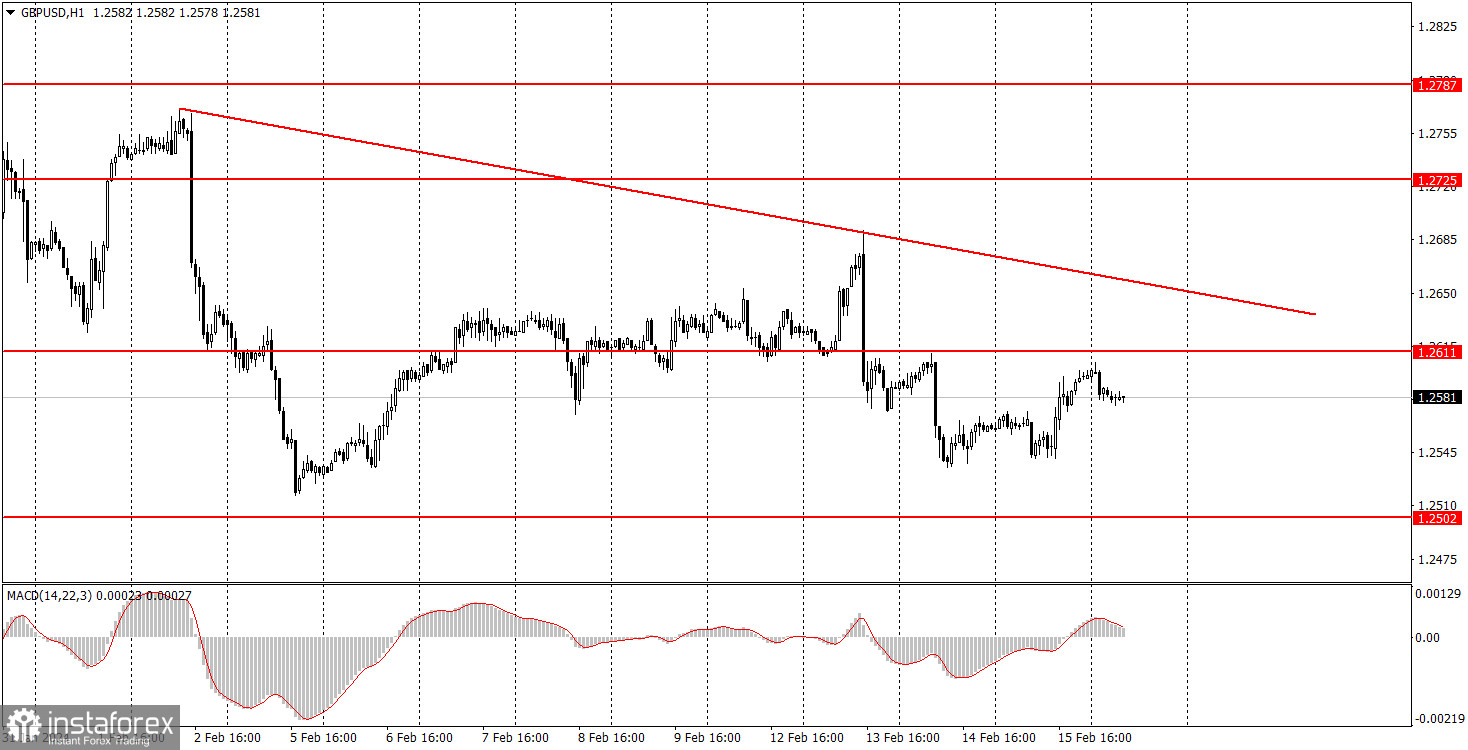Analysis of macroeconomic reports:

A good number of macroeconomic events on Friday. The entire week has been quite informative, and while some instruments have managed to show logical movements that correspond to the current macroeconomic and fundamental background, others did not. We are, of course, talking about the euro and the pound. The euro continues to fall, which is completely aligned with our expectations, while the pound continues to exhibit erratic movements within a limited price range.
Today, there are no significant events lined up in the European Union. Meanwhile, the UK will release a retail sales report that may offer fresh impetus. The same applies to U.S. reports on the Core PPI, PPI, Building Permits, and Preliminary University of Michigan Consumer Sentiment. If these reports show a consistent trend, the market reaction could be stronger than 20-30 pips.
Analysis of fundamental events:

There will be very few fundamental events on Friday. This week, representatives of the Federal Reserve and the European Central Bank have delivered speeches almost every day, but we've only heard very few significant statements. The market hardly pays attention to these speeches. The fundamental background remains unchanged. Today, representatives of all three major central banks—Isabel Schnabel, Mary Daly, Michael Barr, and Huw Pill—will speak. They might mention something interesting, but the market is likely to perceive this information as background noise, so we shouldn't expect an immediate market reaction.
General conclusion:
On Friday, we can look forward to interesting reports in the UK and the U.S.. These reports may influence the movement of both currency pairs. We still expect the euro to fall, while the pound may continue to trade in different directions without a clear trend.
Basic rules of a trading system:
1) Signal strength is determined by the time taken for its formation (either a bounce or level breach). A shorter formation time indicates a stronger signal.
2) If two or more trades around a certain level are initiated based on false signals, subsequent signals from that level should be disregarded.
3) In a flat market, any currency pair can produce multiple false signals or none at all. In any case, the flat trend is not the best condition for trading.
4) Trading activities are confined between the onset of the European session and mid-way through the U.S. session, after which all open trades should be manually closed.
5) On the 30-minute timeframe, trades based on MACD signals are only advisable amidst substantial volatility and an established trend, confirmed either by a trendline or trend channel.
6) If two levels lie closely together (ranging from 5 to 15 pips apart), they should be considered as a support or resistance zone.
How to read charts:
Support and Resistance price levels can serve as targets when buying or selling. You can place Take Profit levels near them.
Red lines represent channels or trend lines, depicting the current market trend and indicating the preferable trading direction.
The MACD(14,22,3) indicator, encompassing both the histogram and signal line, acts as an auxiliary tool and can also be used as a signal source.
Significant speeches and reports (always noted in the news calendar) can profoundly influence the price dynamics. Hence, trading during their release calls for heightened caution. It may be reasonable to exit the market to prevent abrupt price reversals against the prevailing trend.
Beginners should always remember that not every trade will yield profit. Establishing a clear strategy coupled with sound money management is the cornerstone of sustained trading success.





















